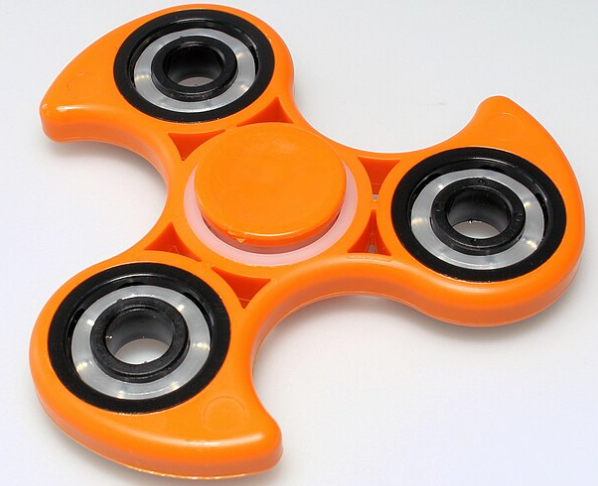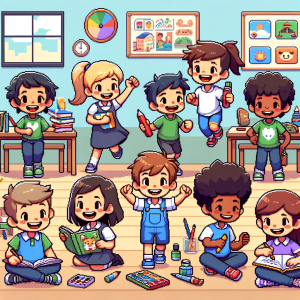
Do Fidget Spinners Help Kids With ADHD?
Imagine a bustling classroom where young children are tasked with staying focused during a reading lesson. For students with ADHD, this can feel like climbing a mountain—every noise, movement, or colorful object pulls their attention away. Enter the fidget spinner, a small, whirling toy touted as a miracle tool for helping kids with attention difficulties. But does it live up to the hype?
A recent study published in the Journal of Attention Disorders sets out to answer this question. Researchers examined whether fidget spinners improve classroom behavior and attentiveness for young children with ADHD. The findings? Not exactly what parents and educators hoped for.
What the Research Says
The study, conducted at a summer treatment program for children with ADHD, included 60 kids aged around five years. Researchers used a robust A-B-A-B design to measure the effects of fidget spinners on attention and behavior during a 30-minute language arts session. The results were clear: while fidget spinners reduced hyperactivity in the initial phase of the study, they significantly disrupted attention throughout.
Children using fidget spinners committed twice as many “attention” rule violations as those without. This wasn’t just a one-off finding; the pattern persisted even after weeks of intensive behavioral training.
Why Fidget Spinners Might Not Work
To understand why these devices didn’t help, let’s consider what makes ADHD so challenging. Children with ADHD often struggle to regulate their attention and impulsivity, making classroom tasks especially daunting. Theoretical models suggest that hyperactive movements—like bouncing a leg or shifting in a seat—can sometimes help by stimulating the brain’s prefrontal cortex.
However, fidget spinners don’t encourage whole-body movement; they primarily engage the hands. This disconnect means they fail to replicate the benefits of gross motor activity. Instead of serving as a subtle aid, they become a shiny distraction.
The Classroom Conundrum
Despite their flashy appeal, fidget spinners didn’t disrupt the classroom for other students, an encouraging but limited finding. Yet, for children with ADHD, the spinners turned into more of a toy than a tool, undermining their ability to focus on lessons.
Imagine Sarah, a 5-year-old with ADHD. Her teacher hands her a fidget spinner to help her stay calm during reading time. Instead of listening to the story, Sarah becomes mesmerized by the spinner’s patterns, losing track of the narrative entirely. This scenario played out repeatedly during the study, illustrating the core problem: ADHD brains often treat “helpful” objects as rewards, which can pull attention further away from learning tasks.
What Works Better?
The study underscores an important takeaway: not all tools marketed for ADHD actually help. Evidence-based strategies, such as behavioral therapy, teacher training, and classroom accommodations like seating arrangements, are far more effective.
For instance, a daily report card system—where teachers and parents work together to monitor and reward positive behavior—has consistently shown benefits. These strategies emphasize structure, consistency, and collaboration, key elements for supporting children with ADHD.
Implications for Parents and Educators
While fidget spinners might seem like an easy fix, this research reminds us that meaningful solutions require a deeper understanding of ADHD. Tools need to align with children’s needs, promoting focus without becoming distractions.
For parents, this means being cautious about quick-fix gadgets. Instead, work closely with teachers and mental health professionals to develop tailored interventions. For school mental health professionals, this study highlights the need to critically evaluate trends before adopting them into practice.
A Path Forward
This research raises critical questions about the future of ADHD interventions. What role should occupational tools play in classrooms? How can we design aids that support attention without distracting? These are important conversations for anyone invested in student mental health.
Let’s Discuss
- Have you seen fidget spinners used effectively in classrooms? What alternatives do you recommend?
- How can schools balance innovation with evidence-based practices for ADHD?
If you enjoyed this article, please share it with your network. Let’s spark a conversation about effective tools for student well-being!
Step into the Future of School Psychology!
Engage with the dynamic field of educational mental health for only $5 monthly. This Week in School Psychology offers you a gateway to understanding and applying crucial psychological findings. Enjoy concise, powerful updates that make a difference. Subscribe and join a community dedicated to knowledge and impact. Take advantage of our special yearly rate and lead the way in educational innovation!



